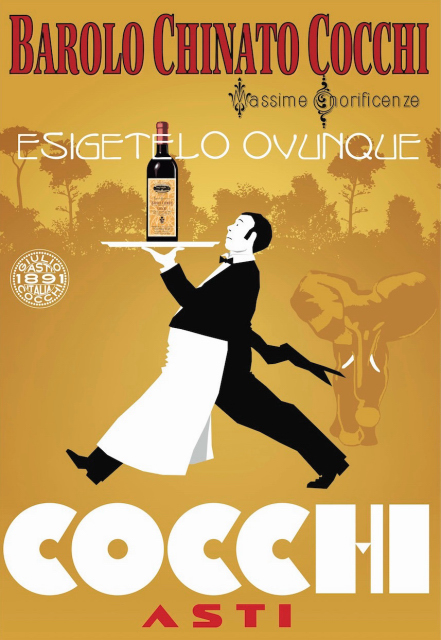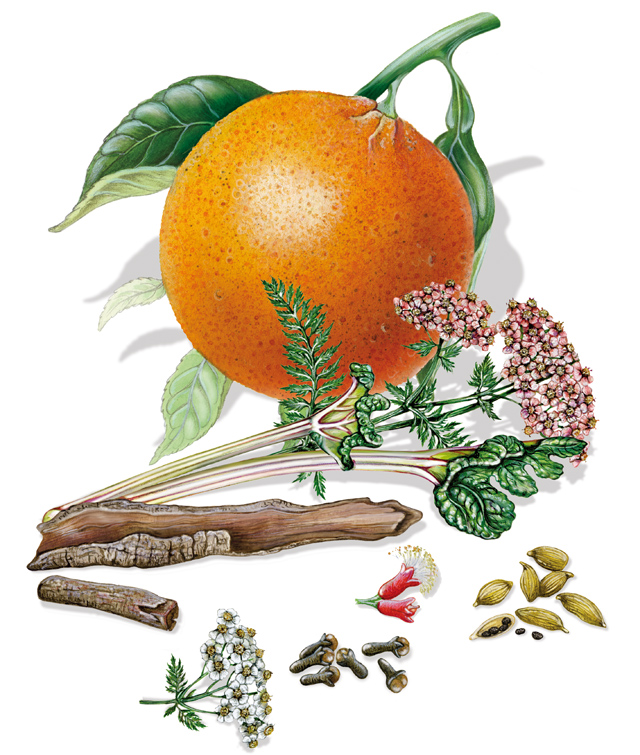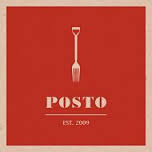 What do you get when you take Barolo, the “king of Italian wines,” mix it with a whole mess of barks, aromatics, and a pinch of sugar? The answer is a little known digestive called Barolo Chinato. This delightful – if hard to find – aromatized wine is a regional oddity that’s slowly emerging in American markets. If you’ve never heard of Barolo Chinato, there’s good reason. It’s a niche product – produced in small amounts exclusively in Piedmont, Italy – and most of it never makes it out of the country. But the rise in popularity of amaro, potable bitters and all manner of back bar curiosities has opened a path through which Barolo Chinato has gained a small foothold in the US.
What do you get when you take Barolo, the “king of Italian wines,” mix it with a whole mess of barks, aromatics, and a pinch of sugar? The answer is a little known digestive called Barolo Chinato. This delightful – if hard to find – aromatized wine is a regional oddity that’s slowly emerging in American markets. If you’ve never heard of Barolo Chinato, there’s good reason. It’s a niche product – produced in small amounts exclusively in Piedmont, Italy – and most of it never makes it out of the country. But the rise in popularity of amaro, potable bitters and all manner of back bar curiosities has opened a path through which Barolo Chinato has gained a small foothold in the US.
“Chinato is not well understood or seen very often. It’s a very specific product,” explained Alec Riveros, the Operations Manager for Posto in Somerville, where he’s quietly amassed the most comprehensive Chinato collection in the city. “When we have guests try it for the first time, they’re surprised because it’s distinctive…You get the tannic structure from the wine and some sweetness up front and then the finish has an herbal, bitter quality.”
Like many liqueurs, Barolo Chinato started its life as a medicinal tincture. It was invented in the 1800s by Giuseppe Cappellano, a pharmacist whose father owned a winery. Cappellano marketed Chinato as a cure for colds, headaches and even colic. Over time, it moved away from medicine cabinets and dubious health claims to become a popular treat at the dinner table, either as an aperitif served over ice with soda water or sipped neat as a digestive, preferably paired with dark chocolate.
 The specific recipes for Chinatos are tightly held, proprietary secrets but there are a few essential elements. The process begins with a combination of herbs and aromatics that must include quinine, which is called china in Italian (hence the name Chinato). Other common ingredients are cinnamon, anise, gentian, juniper and cardamom. These aromatics are macerated for eight weeks in a neutral grain spirit before being combined with Barolo. A little sugar is added to the mix, which is then aged in oak for at least a year. What emerges is a deeply complex and layered tincture.
The specific recipes for Chinatos are tightly held, proprietary secrets but there are a few essential elements. The process begins with a combination of herbs and aromatics that must include quinine, which is called china in Italian (hence the name Chinato). Other common ingredients are cinnamon, anise, gentian, juniper and cardamom. These aromatics are macerated for eight weeks in a neutral grain spirit before being combined with Barolo. A little sugar is added to the mix, which is then aged in oak for at least a year. What emerges is a deeply complex and layered tincture.
While similar in many ways to vermouth, Chinato stands apart through the use of Barolo. Where vermouths use nondescript wines, Chinato incorporates Italy’s best known wine. Produced exclusively in Piedmont, Barolo is made from 100% nebbiolo grapes and aged for a minimum of three years. It’s a highly visible and profitable product on its own, making it an odd choice for fortification. But making Chinato from Barolo is a tradition (in the case of the Cappellano winery, one that goes back five generations) that winemakers take great pride in carrying on. Mark that as a win for curious consumers.
 “It’s similar to the world of amaro,” said Riveros when talking about the emergence of Barolo Chinato. “Amaros as a category have become part of the day-to-day vocabulary of bartenders and anyone who enjoys cocktails. Take for example Aperol. It wasn’t something you’d see five or ten years ago and now how can you not have it?”
“It’s similar to the world of amaro,” said Riveros when talking about the emergence of Barolo Chinato. “Amaros as a category have become part of the day-to-day vocabulary of bartenders and anyone who enjoys cocktails. Take for example Aperol. It wasn’t something you’d see five or ten years ago and now how can you not have it?”
And that’s the hope with Barolo Chinato. That it will find its way into more restaurants and become an essential addition to every cocktail (and chocolate) lover’s home bar. It’s certainly worth giving this little Italian oddity a chance; it’s what Giuseppe would have wanted.
















